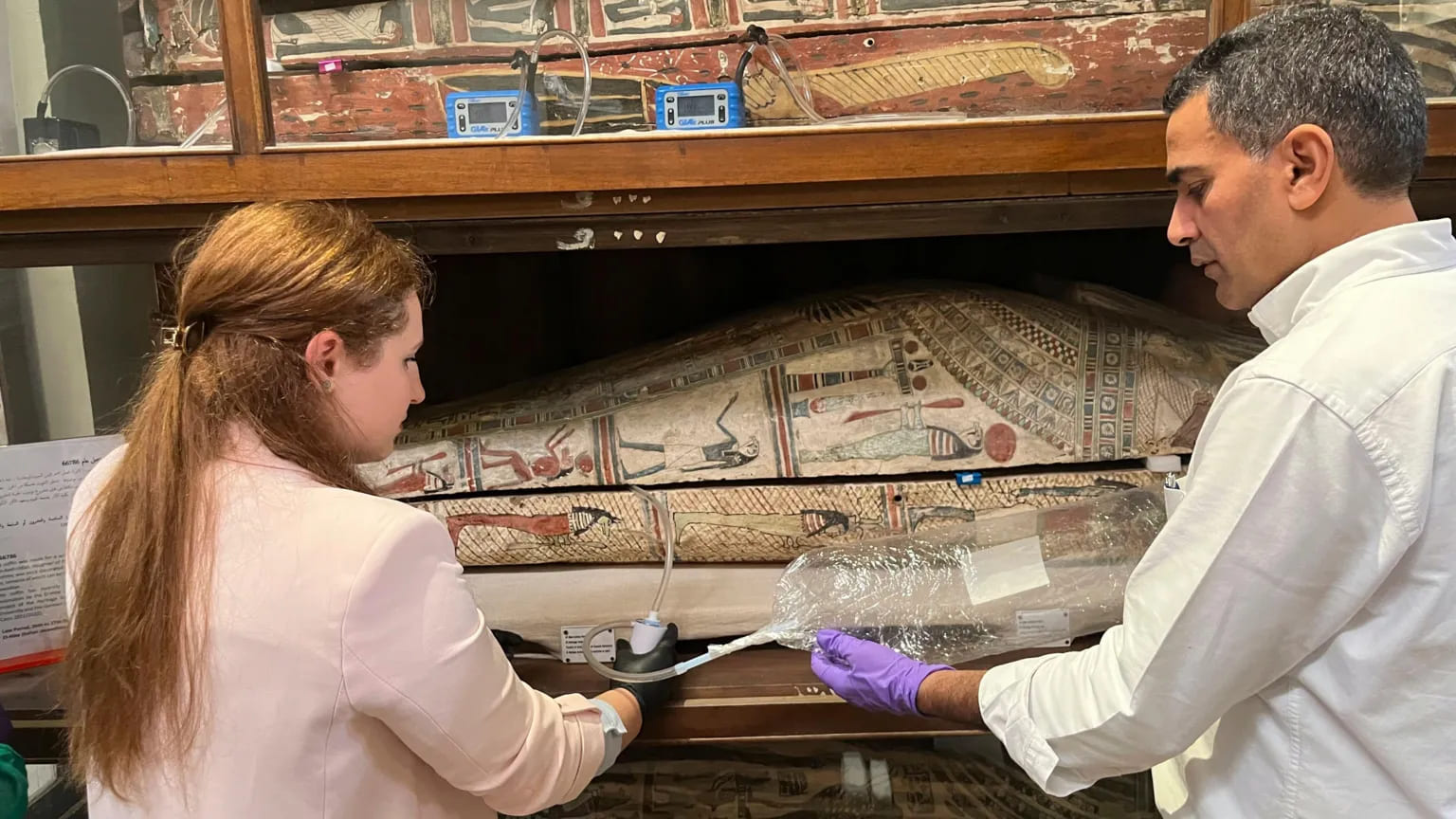Contrary to popular belief, ancient Egyptian mummies emit pleasant scents even after 5,000 years, according to a recent study. Researchers from University College London (UCL) and the University of Ljubljana analyzed nine mummies and found their odors to be “woody,” “spicy,” and “sweet.” This discovery offers new insights into ancient embalming practices and challenges long-held perceptions of mummified remains. The study, published in the Journal of the American Chemical Society, employed non-invasive techniques to analyze the mummies’ scents. Researchers used gas chromatography-mass spectrometry-olfactometry to identify volatile compounds emitted from the sarcophagi, allowing them to study the preservation methods without physically sampling the remains. In ancient Egypt, mummification–embalming and treating a dead body– was not solely about preserving the body but also involved preparing the spirit for the afterlife. Embalmers used aromatic substances such as oils, waxes, and balms, which were believed to aid in the spiritual transition. The pleasant scents detected in the study are likely remnants of these materials, including pine and juniper resins. Dr. Cecilia Bembibre, a researcher at UCL’s Institute for Sustainable Heritage, noted the surprising nature of the findings: “In films and books, terrible things happen…
Ancient Egyptian Mummies Emit “Sweet and Spicy” Scents After Millennia, Study Reveals
February 15, 2025




